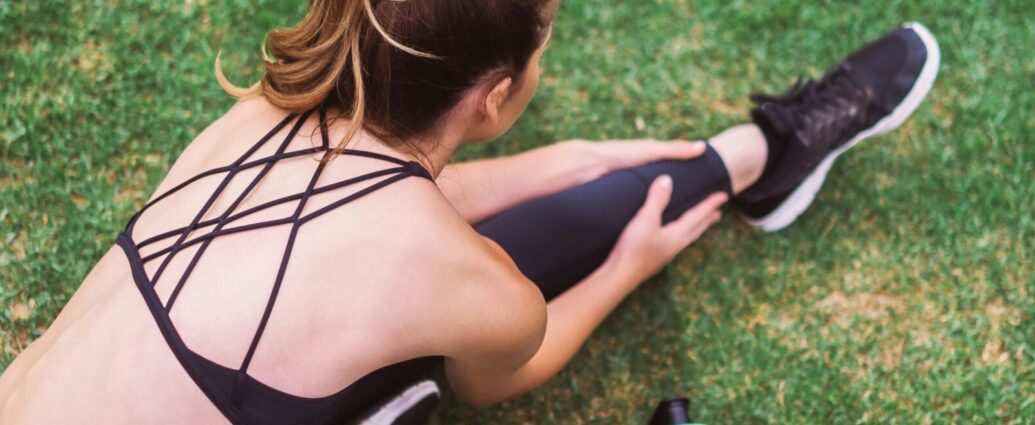Evelyn Dom
In the rush of getting ready for an impromptu outing with a friend, I am faced with the familiar conundrum of what to wear.
Running short on time, I instinctively reach for my trusty go-to outfit that makes me feel confident, but more importantly, comfortable: a pair of high-rise jeans combined with my black Gymshark Seamless Midi Tank. What was initially designed to resist a sweaty workout session has now become the centrepiece of a casual chic ensemble.
In recent years, the activewear industry has surged in popularity. In 2020, the UK sportswear market was valued at £13.8 billion and is expected to undergo a growth rate of approximately 4.5 per cent between 2020 and 2025, reaching an estimated £17.1 billion.
This growth goes hand in hand with the rising integration of activewear into everyday attire, blurring the line between fitness and fashion. The style fuses athletic wear and leisure wear and is commonly known as athleisure.
The History of Athleisure
The word athleisure was first used in a 1979 issue of Business Nation, a magazine describing footwear and apparel for those who wanted to appear athletic.
However, it wasn’t until the late 90s that the athletic trend really took off, coinciding with the entrance of the Hip Hop movement into mainstream culture. Baggy clothing, tracksuits, hoodies and sneakers became staple items in an era that embraced a sporty yet casual look.
https://twitter.com/Power_Girl56/status/1374469407691350020
The early 2000s was also known for Hip Hop’s ‘Bling Era’, a sub-genre that focused on material wealth and status symbols, which re-defined the notion of luxury completely. Luxury brands saw this as an opportunity to hop onto the athleisure bandwagon, resulting in many collaborations between Hip Hop artists.
The Impact of the COVID-19 Pandemic
As fashion is notoriously cyclical, the phenomena of athleisure inevitably re-emerged decades later.
True Fit’s Fashion Genome™, a fashion database created by analysing millions of shopper profiles and behaviours, reveals an 84 per cent surge in athleisure sales in 2021, following the onset of the COVID-19 Pandemic.
“…a style that equates dressing the part with living a seemingly effortless, yet healthy and well-rounded lifestyle”
As a result of the numerous lockdowns and stay-at-home orders, the home took on multiple roles, functioning as the new office and gym space. The comfort and versatility of an outfit became of utmost importance and became fundamental aspects of fashion. Once offices re-opened, consumers wanted to maintain a polished and sophisticated look but were less willing to sacrifice comfort in return for it.
Athleisure is Here to Stay
Athletic wear and fashion are no longer mutually exclusive in the modern wardrobe, and instead successfully combine comfort, functionality and style. Even more so, the concept of ‘athleisure’ surpasses itself as just a fleeting trend, and has instead developed into a style that equates dressing the part with living a seemingly effortless, yet healthy and well-rounded lifestyle.
Social media functions as a catalyst to further romanticise this lifestyle, from “inspo” videos on TikTok showcasing how to create a capsule wardrobe and elevate your athleisure essentials, to social media influencers posting their daily routines online. Social media plays a prominent role in closing the gap between people’s day-to-day lives and what previously seemed unachievable — a well-rounded and luxurious influencer lifestyle.
if i can't wear athleisure i don't wanna go
— icybear ⋆☆*ᵍᵐ⋆♡ (@icygobrrr) November 21, 2023
The idea of a capsule wardrobe revolves around the notion that you only need a handful of essential basics, which you can skillfully mix and match to create a diverse range of outfits. A pair of leggings, for example, can be paired with an oversized t-shirt and white sneakers for a casual laid-back look, or with an oversized blazer and loafers to make it office-appropriate. The versatility of activewear allows for it to re-invent itself, time after time. From Reebok’s £70 sneakers to Prada’s pair selling for almost £1000, the white sneaker epitomises a product that is able to transcend style, class and gender boundaries.
Brands are noticing this trend and continue to capitalise on the merging of what were once two separate worlds.
Consequently, we witness a surge in luxury brand collaborations, such as partnerships by Adidas x Prada, Alexander Wang x H&M, and Louis Vuitton x Supreme. As popularity soars, it is now easier than ever for brands to enter the market, resulting in new activewear brands launching left and right.
What is the Future of Athleisurewear?
The growth of the activewear industry has raised significant concern regarding the trend’s environmental impact, particularly regarding fast fashion, which currently contributes to 10 per cent of global carbon emissions.
Despite this, a 2020 survey by McKinsey & Co. shows a shift in consumer behaviour following the COVID-19 Pandemic as 67 per cent of consumers believe sustainability plays an important role when making a purchase. Consumers generally agree that activewear should be durable, long-lasting and suitable for wearing on different occasions.
“an industry that is continuously evolving and re-inventing itself”
Once again, we see social media playing a major role in creating hype around up-and-coming sustainable brands. In 2018, Tanya and Karen Lee founded LEZÉ The Label, after years of purchasing “stiff and expensive workwear.” The duo’s goal was to “turn waste into sustainable fashion as a vehicle to pursue comfort every day.” The company’s ‘4 things we hate about work pants’ video went viral, its comment section allowing consumers to state their questions and concerns.
It’s evident that consumers value a brand’s forward-thinking approach, from sustainability to size inclusivity. As athleisure is one of the most rapidly expanding categories of fashion, its receptiveness to consumer feedback is crucial to staying relevant in an industry that is continuously evolving and re-inventing itself.
READ NEXT:
-
SELF-OPTIMISATION: UPWARD SPIRAL OR DOWNWARD SLOPE?
-
WHY DO MEN HATE ASTROLOGY?
-
WORKWEAR WARDROBE STAPLES FOR THE OFFICE
Featured image courtesy of LyfeFuel on Unsplash. No changes were made to this image. Image licence found here.

